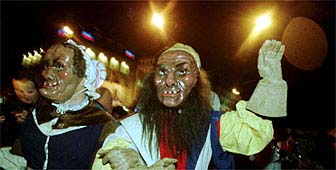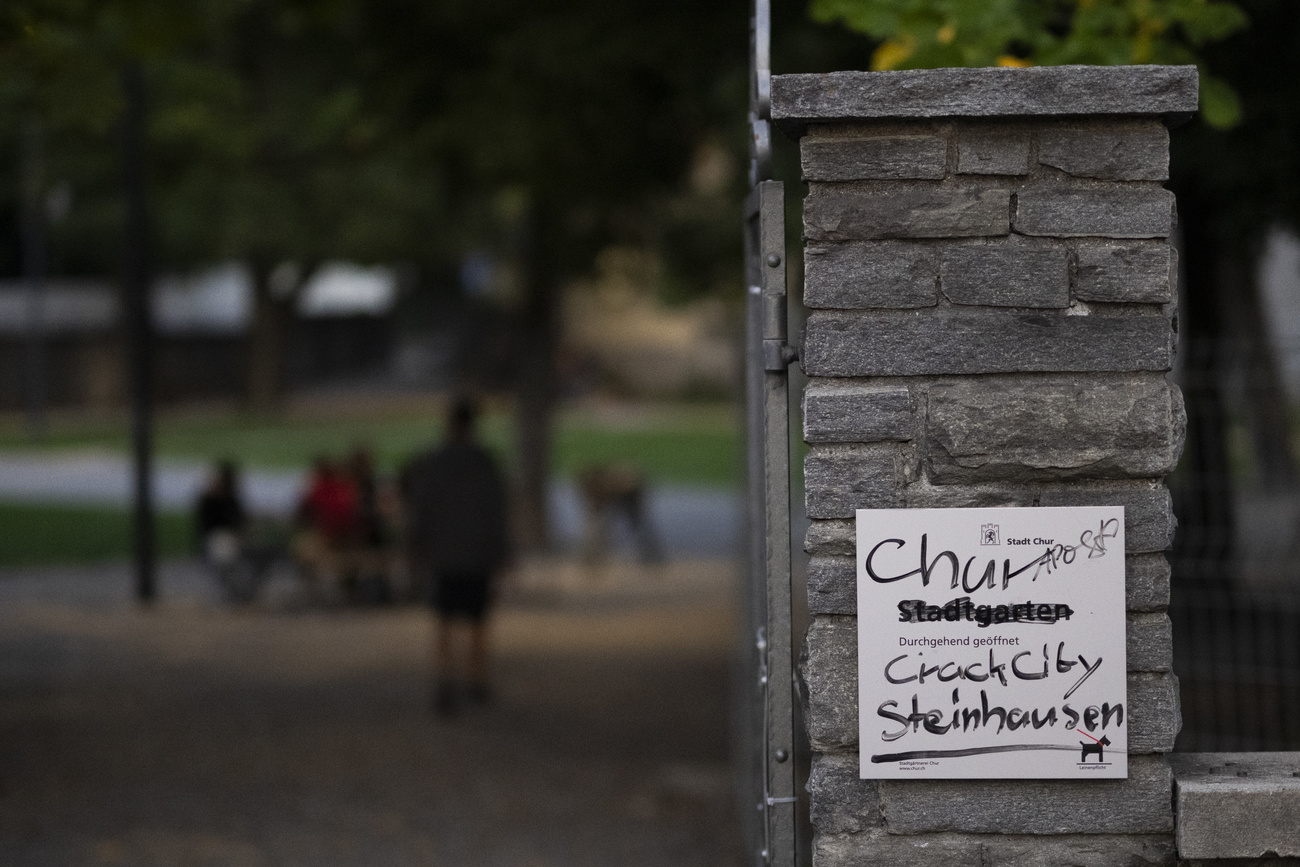Carnival fun in Switzerland

It may lack the abandon of Rio and the debauchery of Mardi Gras, but the carnival season in Switzerland is the one time of year when many Swiss shed their traditional reserve.
The carnival season has begun, though, throughout Switzerland, the dates and traditions vary from canton to canton.
The festivities are rooted in pagan spring festivals, Christian rites and secular folk customs. Some cantons carry on the ancient pagan tradition of using fearsome masks to chase away evil spirits.
One of the biggest carnivals, under way in Lucerne, traditionally opens on “Dirty Thursday”. Dirt also means grease in the Swiss-German dialect, and the name is a reference to the greasy sausages eaten in Lucerne so that its predominantly Catholic population could build up reserves of fat before fasting begins during Lent.
Traditional delicacies also include “Fasnachtsküchli”, carnival cakes which, like the sausages, are high in calories.
Fife and drum
Known in Swiss-German as “Fasnacht” – derived from an old word meaning fruitfulness – each carnival involves processions of highly-decorated floats and most are accompanied by fife and drum music. Masks and flamboyant costumes are worn, and the general effect is to show how the Swiss – whom some regard as being somewhat buttoned-down – know how to party before Lent.
Perhaps the incongruity is part of the attraction to those who think “Swiss carnival” is a contradiction in terms.
In fact, the Swiss do take their carnival fun seriously. For the best part of a year, some 12,000 active participants in Basel spend time preparing grotesque masks and a dazzling array of costumes and floats for their Fasnacht.
They all belong to “cliques”: float themes and satiric verses are vetted in advance by carnival committees and there’s a degree of organisation that would be unthinkable in the carnivals of South American cities and New Orleans.
Basel Fasnacht, as in some other mainly Protestant regions, takes place after the beginning of Lent and this year begins on February 18.
Costume balls
The biggest carnival in Switzerland’s French-speaking region is at Payerne. It lasts four days – one day longer than Basel’s – and includes costume balls held throughout the town.
In the Italian-speaking canton of Ticino, carnival used to fulfil an important social function: traditionally it was the time in which the rich had to ensure that the poor were able to fill their stomachs before Lent.
To this day, some communities in Ticino organise free meals.
swissinfo with agencies

In compliance with the JTI standards
More: SWI swissinfo.ch certified by the Journalism Trust Initiative








You can find an overview of ongoing debates with our journalists here . Please join us!
If you want to start a conversation about a topic raised in this article or want to report factual errors, email us at english@swissinfo.ch.